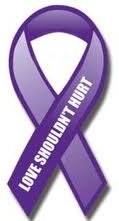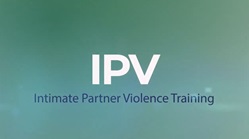Intimate Partner Violence (IPV)
Watch our IPV Training Video and take the Online IPV Training Connecticut IPV Hotline Numbers: 888-774-2900 (English) or 844-831-9200 (Español) About Us Contacts:
Contacts:Central Office Staff
IPV Specialists
Contract Serve Array (for IPV and Substance Abuse Recovery)
FAQs
Goals & Mission
Impact of IPV on Victims
IPV Practice Guide
IPV Policy, 21-8
Online Training
Reports
Resources
Services
Statistics
Substance Use
NOTE: The new, broader term "Intimate Partner Violence" has replaced "Domestic Violence."
________________________________
NEW! ONLINE TRAINING
Watch our IPV Training Video
Take our new Online Training:
FOR DCF STAFF (only)
FOR PROVIDERS
________________________________
About Us
Every child and adult in the United States has the right to live in a safe, nurturing home. Child maltreatment and intimate partner violence (IPV) often occur together and it is important to recognize the signs, screen and assess for IPV and provide a safe intervention response. The mission of the State of Connecticut Department of Children and Families is to work together with families and communities for the children who are healthy, safe, smart and strong.
________________________________
IPV Goals & Mission
-
Establish a comprehensive response to IPV that offers meaningful and sustainable assistance to families that is safe, respectful, culturally relevant and responsive to the unique strengths and concerns of the families impacted by IPV.
-
Safety and well-being of children will result with the provision of a full continuum of IPV services offered through a state and local coordinated response.
-
Increase the internal capacity to respond to families impacted by IPV
-
Train DCF workforce to respond to IPV.
-
Ability to assess and meet the needs of low, moderate and high risk families.
________________________________
Intimate Partner Violence Specialists
Each Regional DCF office has an assigned Intimate Partner Violence Specialist (IPVS).As members of the Regional Resource Group, the role of the IPVS is to provide consultation, support, leadership and coordination to improve outcomes for children and families impacted by domestic violence. The Specialist will utilize a family, strength based approach that integrates non-clinical and clinical approaches to support child protection practice and service provision and coordination. This approach focuses heavily on supporting frontline workers with specific cases and in some instances, includes direct consultation with families. The Specialist will have the opportunity to offer guidance to social workers especially as it pertains to information and resources that can help the entire family system. The Specialists will also have the opportunity to promote systems change. The positions will focus heavily on education and training both within the agency and in the community.
Region 1
Christa Rider, Clinical PD, 203-384-5417
Rocio Chavez, Bridgeport Office, 203-384-5376
Norwalk - Please contact Christa Rider
Region 2
Elizabeth Wojtyniak, Clinical PD, 203-786-0635 or 203-306-5327
Tanisha Rawlinson, New Haven Office, 203-786-2537
Rosa Cuadrado, Milford Office, 203-306-5323
Region 3
Lori Blinderman, Clinical PD, 860-638-2114
Gina Mangano, Norwich Office, 860-892-2929
Blanca Roman, Middletown Office, 860-638-2189
Willimantic - Please contact Lori Blinderman
Region 4
Kristen Oliver, Clinical PD, 860-418-8401
Polly Marston, Manchester Office, 860-533-3793
Hartford - Please contact Kristen Oliver
Region 5
Erik Derouin, Supervising Clinician, 203-759-7230
Ralph Davila, Torrington Office, 860-496-5828
Flodyne Cayard, Danbury Office, 203-207-5289
Waterbury Office - Please contact Erik Derouin
Region 6
Melissa Milardo, Clinical PD, 860-832-5376 (New Britain) or 203-238-8514 (Meriden)
Todd Lowe, New Britain Office, 860-832-5445
Nancy Reyes, Meriden, 203-238-8483
Kris Robles, Director, 203-228-6148
Lindsey Miller, Health Administrator, 860-550-5010
________________________________
The Impact of Domestic Violence on Victims
As with anyone who has been traumatized, the non-offending parent demonstrate a wide range of effects from intimate partner violence. The offender’s abusive behavior can cause an array of health problems and physical injuries. Non offenders may require medical attention for immediate injuries, hospitalization for severe assaults, or chronic care for debilitating health problems resulting from the perpetrator’s physical attacks. The direct physical effects of intimate partner violence can range from minor scratches or bruises to fractured bones or sexually transmitted diseases resulting from forced sexual activity and other practices. The indirect physical effects of intimate partner violence can range from recurring headaches or stomachaches to severe health problems due to withheld medical attention or medications.
- Emotional withdrawal
- Denial or being guarded of the abuse
- Impulsivity or aggressiveness
- Apprehension or fear
- Helplessness
- Anger
- Anxiety or hypervigilance
- Disturbance of eating or sleeping patterns
- Substance abuse
- Depression
- Suicide
- Post-traumatic stress disorder
Possible Symptoms in Children Exposed to Intimate Partner Violence: (From ChildWelfare.gov)
- Sleeplessness, fears of going to sleep, nightmares, dreams of danger
- Physical symptoms such as headaches or stomachaches
- Hypervigilance to danger or being hurt
- Fighting with others, hurting other children or animals
- Temper tantrums or defiant behavior
- Withdrawal from people or typical activities
- Listlessness, depression, low energy
- Feelings of loneliness and isolation
- Current or subsequent substance abuse
- Suicide attempts or engaging in dangerous behavior
- Poor school performance
- Difficulties concentrating and paying attention
- Fears of being separated from the non-abusing parent;
- Feeling that his or her best is not good enough;
- Taking on adult or parental responsibilities;
- Excessive worrying;
- Bed-wetting or regression to earlier developmental stages;
- Dissociation;
- Identifying with or mirroring behaviors of the abuser.
________________________________
IPV Reports
- 2017 - 2018 Report of the Connecticut Domestic Violence Fatality Review Task Force and Press Release
- Children’s Exposure to Intimate Partner Violence among DCF Referred Families: Results from a Comprehensive Chart Review
- Comparison Of Report Factors And Demographic Profiles Of Children Associated With Abuse/Neglect Reports Accepted During Sfy2012 ‐ 2017 With And Without Indicators Of Intimate Partner Violence
- DV Laws 2018
________________________________
Statistics (Connecticut IPV)
- In Connecticut, there are approximately 20,000 family violence incidents annually resulting in at least one arrest.
- Seventy three percent (73%) were intimate partner violence incidents.
- The DCF internal data on families also shows that violence is occurring within homes in Connecticut, as indicated with the following 2014 DCF data.
- In Calendar years 2014, the Department received 30,566 reports.
- Of those reports, there were allegations of intimate partner violence in 6,322 reports.
- In regards to the Intimate Partner Violence reports, sixty-eight percent (68%) were served through the investigation track.
- Thirty-two percent (32%) through the Family Assessment Response (FAR), DCF’s Differential Response track.
- Approximately 40% of these families are referred to our community partner agencies with IPV-related concerns.
- In 2014, Forty-nine percent (49%) of the IPV reports, had co-occurring IPV and substance use, consistent with studies that indicate a very strong intersection between IPV and substance use.
- Studies of IPV frequently indicate high rates of alcohol and other drug use by offenders during abuse. Not only do offenders tend to abuse drugs and alcohol, but IPV also increased the probability that victims will use alcohol and drugs to cope with abuse. Consistently over the last 13 years, the number and percent of accepted reports that include allegations of intimate partner violence from calendar year 2000 through calendar year 2014 remain consistent at approximately 21%. This reflects only the reports that are received and accepted with allegations of IPV and does not reflect the additional instances of IPV discovered through assessment.
- In 2014, approximately 48% of reports with an IPV indicator were substantiated.
United States IPV Statistics:
(statistics from The National Coalition Against Domestic Violence)
- Every 9 seconds in the US a woman is assaulted or beaten.
- In the United States, an average of 20 people are physically abused by intimate partners every minute. This equates to more than 10 million abuse victims annually.
- 1 in 3 women and 1 in 4 men have been physically abused by an intimate partner.
- 1 in 5 women and 1 in 7 men have been severely physically abused by an intimate partner.
- 1 in 7 women and 1 in 18 men have been stalked. Stalking causes the target to fear she/he or someone close to her/him will be harmed or killed.
- The presence of a gun in a domestic violence situation increases the risk of homicide by 500%.
- Domestic violence accounts for 15% of all violent crime.
- Domestic violence is most common among women between the ages of 18-24.
- 19% of domestic violence involves a weapon.
- Domestic victimization is correlated with a higher rate of depression and suicidal behavior.
- Only 34% of people who are injured by intimate partners receive medical care for their injuries.
________________________________
IPV Resources
CCADV - Connecticut Coalition Against Domestic Violence
CCADV National Resources
CDC- Center for Disease Control
CT State Police Response to Crimes of Family Violence
Domestic Violence Offender Program Standards Advisory Council
Evidence-based Trauma-specific interventions in Connecticut
Infoline: call 2-1-1
The National Domestic Violence Hotline 24/7
Vigor
________________________________
Articles
Child Welfare for Immigrant victims
________________________________
IPV Services
IPV-FAIR Model: is a comprehensive response to families impacted by intimate partner violence (IPV). The model is a combination of home based and clinic based services. It is strength and ecologically focused with safety being the highest priority while assessing and addressing the needs of each family member. IPV-FAIR will engage all members of the family. The model will offer/refer individual, group, family, and/or support interventions for the family based on assessed needs and will provide services/linkages for the children affected by IPV to adequately address trauma.
Target Population: Families involved with DCF Child Protective Services who are impacted by IPV and have caretaking responsibilities for a child or children. It addresses families where the children remain in the home or are placed out of the home with a goal of reunification.
Capacity
- FAIR is a 4 – 6 month intervention engaging all family members.
- The program treatment team consists of a Clinician and a Family Support Navigator
- The treatment team/client ration is 1:10.
- The annual service capacity per team will range between 20-30 families dependent upon the length of service. Annual capacity for a program is 40 – 60 families.
Family Contact
- Families will be seen 1-3 times per week.
- Clinical services must be provided to any/all family members based on assessed needs, minimally once per week..
- Family members will be seen in their home and/or at the program/clinic to increase safety, service accessibility. In-home contact is the expectation, allowing for safety and risk to be continually assessed.
- The IPVS and SW will continue to provide assistance with engagement.
Interventions
Safety remains top priority while considering the identified needs of the family. Engaging all members of the family is an important component of FAIR.
Clinical Interventions
Clinicians will provide flexible individual, group, family and/or support interventions to meet the changing needs of families over the course of treatment. Clinical interventions may include, but are not limited to: Fathers for Change, Mothers and More, Genograms, Cognitive Behavioral Therapy, Psychotherapy, Trauma-Focused therapy, and Parent-child dyadic work.
Non-Clinical Interventions
Family navigators will facilitate engagement, eliminate barriers to success and assist with all non-clinical needs which may include: Case management, Psycho-education, Family engagement, Strengthening parent/child relationship through: communication, bonding, attachment, development, insight/ability to respond to child’s needs, Parent education and skill building on: knowledge of impact of IPV on their well-being and the well-being of their children; structure and limit setting; supervision; discipline; child development; effective communication; conflict resolution; crisis management; and problem-solving.
SAW IPV-FAIR
IPV-FAIR Fact Sheet
________________________________
MST/IPV
MST-IPV, based upon an evidence-based treatment model, provides intensive in-home family and community based treatment to families with active DCF cases due to the physical abuse and/or neglect of a child in the family and due to the impact of intimate partner violence (IPV) within the family.
Target Population
MST-IPV serves families with a minor child under the age of 18 and impacted by IPV who meet the following inclusionary criteria:
- Families who have come to the attention of the DCF due to the physical abuse and/or neglect of the children in the family and due to the impact of IPV within the family.
- A caregiver in the home is also experiencing IPV which is impacting the safety and well-being of the caregiver and children in the home.
- The family had a new report of physical abuse and/or neglect in the last 180 days.
- If the target child or children are in the home at the time of the report, the goal of CPS is to keep the family together.
- If the target child or children are in an out of home placement at the time of referral, the goal of CPS is to safely reunite the family as quickly as possible.
- The ongoing risk to child safety is sufficient to warrant the opening of an ongoing services case
Referral and Service Initiation
- The Contractor will be available to accept referrals Monday-Friday, 52 weeks per year within the hours of operation.
- The MST-IPV Supervisor notifies the Gatekeeper (IPV Specialist) of availability for referrals. IPV Specialist makes the referral to the MST-IPV Supervisor
- The MST-IPV supervisor and IPV Specialist will review the case for appropriateness.
- DCF SW will make contact with the family to schedule the initial visit with the family by the MST-IPV Program Manager and the DCF SW within 3 business days.
Caseload and Length of Service
-
Approximately 21 families will be served annually
-
Caseload = 4 families per Full-time Clinician
-
Average length of service is 6-9 months.
-
Minimum 3 home visits per week
Services and Interventions
The Clinical Approach will be:
-
A set of 9 principles and a structured analytic process for assessing drivers of referral behaviors (IPV and child maltreatment), prioritizing risk factors, and implementing evidence-based interventions that directly address these risk factors.
-
A focus on family strengths, engagement, safety, and sustainability of progress.
-
Improving parent management practices and minimizing family conflicts.
-
On an as indicated basis, parents may receive a course of Reinforcement Based Therapy (RBT) for substance use, utilizing Motivational Interviewing to help engage and motivate parents and cognitive-behavioral techniques to reinforce abstinence and abstinence-supporting behaviors.
The Service Components will be:
-
a functional analysis of abuse/neglect and IPV incidents and the inclusion of findings in service planning and treatment interventions.
-
treatment of caregiver mental needs, including Post-Traumatic Stress Disorder, that interfere with parenting;
-
interventions to reinforce the caregiver accepting responsibility for abuse/neglect and partner conflict or violence that has occurred;
-
interventions to assist partners with managing conflict without violence;
-
interventions to help parents who live apart co-parent their children peacefully;
-
training in anger management, where anger is the result of skills deficit and in the absence of instrumental anger, and communication skills;
-
integration of the DCF social worker in the ongoing intervention process;
-
as needed, interventions that focus on substance use treatment for all family members (or members of the household);
-
assistance with housing, employment and budget management;
-
interventions to support and reinforce pro-social recreational activities;
-
inclusion of time of the psychiatrist or APRN that is dedicated to MST-IPV; quarterly investment check-ups with each family that includes the DCF social worker.
-
care coordination with other services as warranted, such as helping families address physical health or legal needs
Crisis Response
MST-IPV provides 24-hour emergency and crisis intervention services to children and their families by phone or pager. In some cases, face-to-face interventions will be required and will be provided, at the discretion of the therapist and supervisor. The team contacts the local emergency mobile psychiatric services in those cases where the MST-IPV services cannot stabilize the crisis situation for the caregivers and/or the children.
MST-IPV SAW
MST-IPV Fact Sheet


